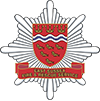
The Hindu festival of Holi is celebrated by millions of people all around the world. Holi is celebrated in Phagun, the 12th month of the Hindu calendar, which corresponds to February or March in the Gregorian calendar.
Holi is known as the festival of love, colours and marks the arrival of spring and the end of winter.
To mark the occasion, people throw coloured powder and water at each other. Holi is also known as the "festival of colours".
How is Holi celebrated?
Up and down the country there will be huge crowds gathering in the street to throw paint at each other. Some families hold religious ceremonies, but for many Holi is more a time for fun.
On the first day people light bonfires and throw roasting grains, popcorn, coconut and chickpeas onto them. The next day, people of all ages go into the streets for fun and paint-throwing.
The coloured powder is thought to be a reference to Krishna throwing coloured water at people when he was a boy.
The two-day festival also celebrates the Hindu god Krishna and the legend of Holika and Prahlad and the story which symbolises good overcoming evil.
Want to find out more? Click here to view a short video from the BBC about the “festival of colours”.
Celebrating with a bonfire?
If you plan to celebrate the first day of Holi with a bonfire, check out our handy tips below:
Building a bonfire
Fire can spread easily, so where and how you build your bonfire is important. If you have a bonfire, follow these simple guidelines:
- warn your neighbours beforehand - they are much less likely to complain
- light the bonfire at a time least likely to affect your neighbours - eg not on a warm day when people will be in their garden
- only burn dry material not damp, which causes more smoke
- build the bonfire away from sheds, fences and trees
- check there are no cables - like telephone wires - above the bonfire
- don't use petrol or paraffin to get the fire going - it may get out of control quickly
- keep a bucket of water or a garden hose nearby - in case of emergencies
- don't leave the bonfire unattended
- keep children and pets away from the bonfire
- don't throw any fireworks into the fire
- don't burn aerosols, tyres, canisters or anything containing foam or paint - many produce toxic fumes and some containers may explode, causing injury
Bonfire safety tips
Once the bonfire is lit, make sure you:
- keep a bucket of water or a garden hose nearby - in case of emergencies
- don't leave the bonfire unattended
- keep children and pets away from the bonfire
- don't throw any fireworks into the fire
- don't burn aerosols, tyres, canisters or anything containing foam or paint - many produce toxic fumes and some containers may explode, causing injury
Once the bonfire has died down, spray the embers with water to stop it reigniting.
